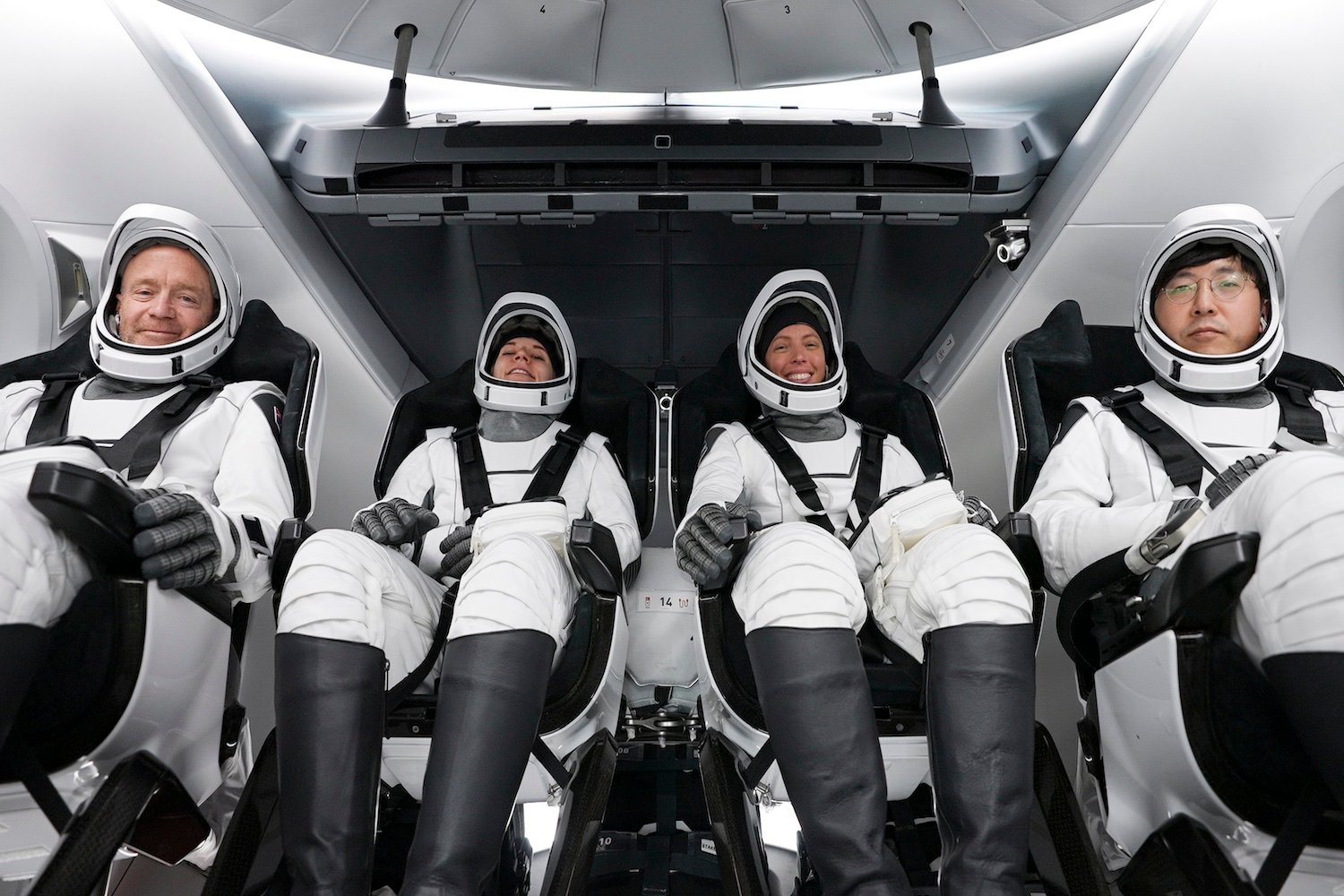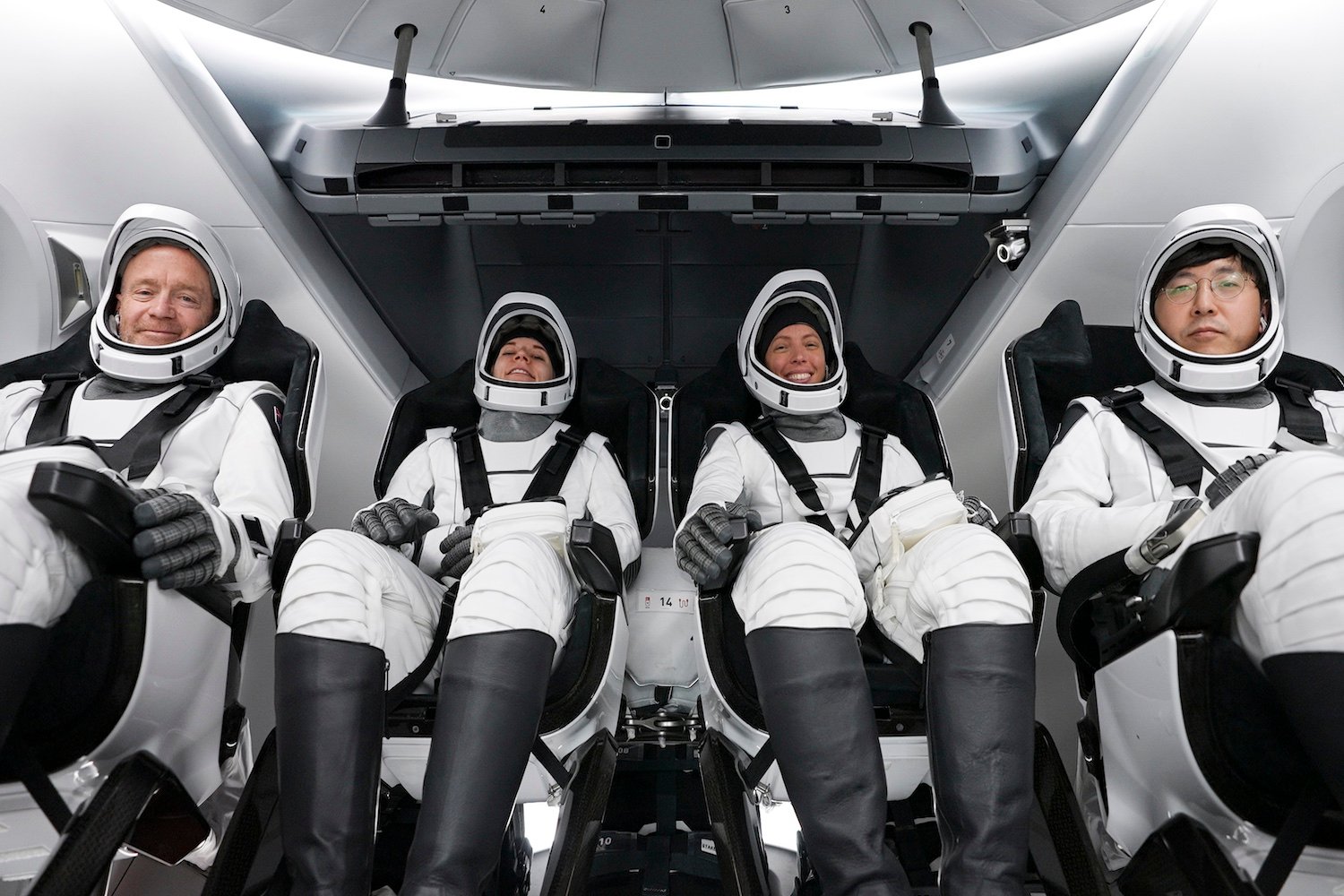A crew of four first-time astronauts are on their way home after spending nearly four days in a unique polar orbit. SpaceX’s Fram2 mission is set to return to Earth on Friday, and the astronauts will make their way out of the spacecraft on their own.
The Fram2 crew is scheduled for splashdown on Friday, April 4 at 12:19 p.m. ET. The astronauts will ride home aboard SpaceX’s Dragon crew vehicle, which will splashdown off the coast of California. This will be the first time a crewed Dragon splashes down in the Pacific Ocean. Once back on Earth, “the crew plans to exit from the Dragon spacecraft without additional medical and operational assistance, helping researchers characterize the ability of astronauts to perform unassisted functional tasks after short and long durations in space,” according to SpaceX.
SpaceX will live stream the crew’s return on the company’s website, and through the social media platform X. The webcast will begin around an hour before scheduled splashdown.
Throughout their first two full days on-orbit, the crew took the first-ever X-ray in space, 130 years after the first X-ray was captured.
The @framonauts did a brain mapping EEG experiment and contributed to a continuous glucose monitor study examining how fluid shifts in space… pic.twitter.com/Tpvp3l5Zrh
— SpaceX (@SpaceX) April 3, 2025
SpaceX’s Fram2 mission launched on Monday, March 31, from NASA’s Kennedy Space Center in Florida. The private mission sent a crew of amateur astronauts where no other human has flown before, orbiting Earth from above the planet’s polar regions on an unprecedented journey. Chun Wang, a crypto billionaire who founded the Bitcoin mining companies f2pool and stakefish, led the crew as mission commander. The remaining crew members are Jannicke Mikkelsen, a Norwegian cinematographer; Eric Philips, an Australian polar adventurer; and Rabea Rogge, a German robotics researcher.
All four crew members had never been to space prior to this mission, which is reportedly being funded by Wang. In a series of updates from space, the crew described feeling motion sickness in orbit and having unfortunate bouts of vomiting in the spacecraft.
The astronauts packed 22 research payloads to orbit, which are designed to improve our understanding of human health in space and prepare for long-duration missions. As part of the research, the crew took the first-ever X-ray in space, did a brain mapping EEG experiment and examined how fluid shifts in space affect the accuracy of glucose monitors for diabetics. The crew members also conducted orbital tests for SpaceX’s Starlink network, which they used to contact their families on Earth, while robotics researcher Rogge used an onboard amateur radio, called Fram2Ham, to contact Berlin.
During the mission, the Dragon spacecraft flew over the planet’s polar regions at an altitude of around 265 to 280 miles (425 to 450 kilometers), and traveled in a polar orbit at an inclination of about 60 to 90 degrees to the equator. The same spacecraft, named the Dragon Resilience, is the one that carried the Polaris Dawn mission, which pulled off the first commercial spacewalk in history just last year.




